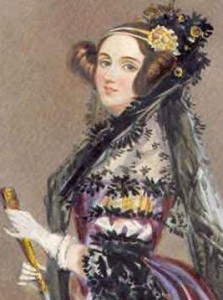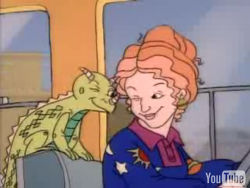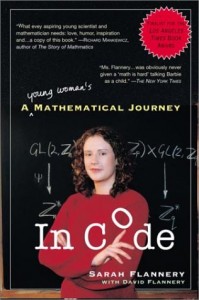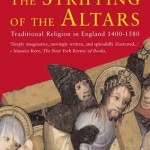Man, did I pick an auspicious time to transition to Patheos; it’s Ada Lovelace Day.
Ada Lovelace Day aims to raise the profile of women in science, technology, engineering and maths by encouraging people around the world to talk about the women whose work they admire. This international day of celebration helps people learn about the achievements of women in STEM, inspiring others and creating new role models for young and old alike.
Ada Lovelace is widely held to have been the first computer programmer. Close friends with inventor Charle Babbage, Lovelace was intrigued by his Analytical Engine and in 1842, she translated a description of it by italian mathematician Luigi Menabrea. Babbage asked her to expand the article, “as she understood [it] so well”, and this was when she wrote several early ‘computer programs’. Ada Lovelace died of cancer at 36, her potential tragically unfulfilled.
Bloggers are encouraged to feature a woman who set your scientific or mathematical imagination on fire, and, for me, there’s an obvious choice.
There’s no question that Magic School Bus was my favorite tv show as a kid (and second-place went to Bill Nye the Science Guy). Ms. Frizzle didn’t make science a far-away, totally abstract discipline—something practiced by an arcane priesthood. For her students, science was just the task of wading into the unknown and trying to figure out what the heck was going on.
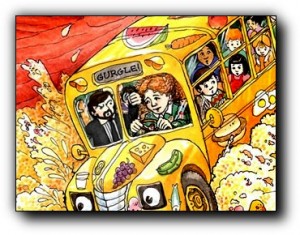 That’s what science is. All the statistics and methodology are just trying to make sure you interpret your observations as accurately as possible. When it comes to relative probability, Homo sapiens is not a very well-calibrated instrument.
That’s what science is. All the statistics and methodology are just trying to make sure you interpret your observations as accurately as possible. When it comes to relative probability, Homo sapiens is not a very well-calibrated instrument.
The trouble is, a lot of science curricula are focused only on the techniques and methods and never let you get a taste of discovery. Students in these classes can only apply statistical tests iff the problems they come across look enough like the ones in their textbook. They can’t tell you why they’re using them or imagine how someone could have invented them in the first place.
Ms. Frizzle’s rallying cry, “Take chances, make mistakes, get MESSY!” spurred her students to be adventurous observers, interested in following the truth wherever it leads – a great starting point for a scientist.
Now, I’ll admit I feel a little bad picking a fictional woman as my role model on Ada Lovelace day. I do think that fictional women also help challenge stereotypes, and that fiction is a great way to do an end run around your assumptions and carry out philosophy by other means. But when I look at PZ’s post explaining that most of his students can’t name a single living female scientist, I have to throw in a plug for Sarah Flannery.
She’s a Irish mathematician and the author of In Code: A Mathematical Journey. In 1999, she was recognized as Ireland’s Young Scientist of the Year for her work on cryptography. Her memoir is warmly written and infectiously enthusiastic. It’d be a great gift for a teen and has the high-level details of her work in appendices if a particularly geeky reader wants to take a crack at it.
Oh, and for bonus science book recommendations (because I can’t stop once I get started), I always have to throw in a plug for Rebecca Skloot’s The Immortal Life of Henrietta Lacks. It’s a brilliant portrait of one of science’s biggest blindspots – remembering to treat experimental subjects as human. And, apropos of my statistics rant above, you might find a remedy in The Lady Tasting Tea: How Statistics Revolutionized Science in the Twentieth Century by David Salsburg. He does a great job illustrating the disputes and failures that produced modern statistical methods instead of treating them as laws mysteriously dispensed from on high. Now, to close out this post properly:
http://www.youtube.com/watch?v=OG3ieifrqyQ
